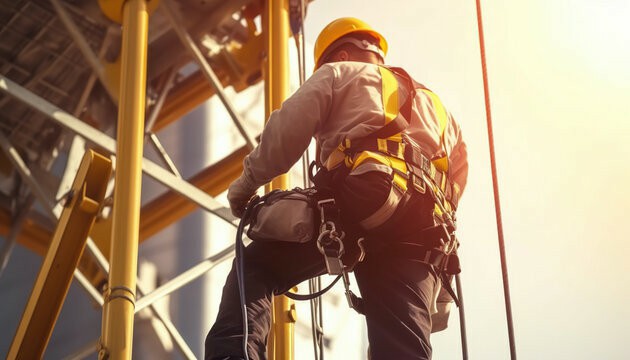Innovative Safety Technologies Transforming Working at Heights Training Programs
In today's fast-paced work environment, ensuring employee safety, particularly in high-risk areas like Working at Heights, is paramount. Businesses are increasingly recognizing the importance of integrating cutting-edge technologies into their Working at Heights training programs to safeguard their workforce. In this blog, we will explore how advancements such as smart helmets, IoT sensors, and AI-driven risk assessments are revolutionizing safety training, making it more effective and reliable.
The Importance of Effective Working at Heights Training
Working at Heights poses significant risks, including falls, which can lead to serious injuries or fatalities. Therefore, comprehensive Working at Heights training is essential to equip workers with the skills and knowledge they need to operate safely. Traditional training methods, while effective, may not fully address the evolving safety concerns posed by modern workplace challenges.
Challenges Faced in Traditional Training Approaches
- Limited engagement and retention during classroom training sessions.
- Inadequate simulation of real-world scenarios.
- Difficulties in assessing individual risks and tailoring training accordingly.
Emerging Technologies Enhancing Training Outcomes
With the integration of groundbreaking technologies, Working at Heights training is evolving to address these challenges effectively. Here are some of the most impactful innovations:
1. Smart Helmets
Smart helmets are wearable devices that provide real-time data to enhance safety. These helmets can be equipped with:
- Heads-Up Displays (HUDs): Offering visual alerts and guidance while allowing workers to maintain their focus on tasks.
- Integrated Communication Systems: Enabling instant communication between team members without diverting attention from their work.
- Augmented Reality (AR) Features: Overlaying safety information on the physical environment to visualize hazards and best practices.
2. IoT Sensors
Internet of Things (IoT) sensors play a crucial role in recognizing and preventing potential hazards. These sensors can monitor:
- Environmental Conditions: Such as wind speed and temperature to ensure safe working conditions.
- Worker Vital Signs: Monitoring heart rates and alerting supervisors if a worker is showing signs of distress.
- Equipment Status: Providing real-time feedback on the condition of safety gear, ensuring it’s always in operational order.
3. AI-Powered Risk Assessments
One of the most promising advancements in safety training is the use of artificial intelligence to conduct risk assessments. Here’s how AI benefits Working at Heights training:
- Predictive Analytics: By analyzing historical data, AI can identify patterns that may lead to accidents and suggest preventive measures.
- Customized Training Programs: AI algorithms can adapt training materials based on individual performance and identified knowledge gaps.
- Continuous Monitoring: AI systems can oversee real-time data from IoT devices to flag potential safety violations instantaneously.
Implementing Technology in Working at Heights Training
To successfully adopt these technologies, businesses should consider the following steps:
- Evaluate Current Training Programs: Identify gaps in existing training frameworks and opportunities for technological integration.
- Engage with Technology Providers: Collaborate with experts in smart helmets and IoT solutions to design tailored safety systems.
- Conduct Pilot Programs: Test new technologies with a small group before a full-scale rollout to evaluate effectiveness.
- Establish Continuous Feedback Loops: Gather feedback from participants to refine training materials and technology applications.
Real-World Examples of Technology Integration
Several organizations have successfully embraced these advancements to enhance their Working at Heights training:
- Company A: Implemented smart helmets that reduced incident response time by 30%, allowing paramedics to reach injured workers more rapidly.
- Company B: Used IoT sensors to monitor wind conditions on construction sites, leading to a significant drop in weather-related accidents.
- Company C: Adopted AI-driven training modules that improved employee retention rates on safety protocols by 40%.
Conclusion: A Safer Future for Working at Heights
Incorporating innovative safety technologies into Working at Heights training is crucial for creating safer work environments. By investing in smart helmets, IoT sensors, and AI-powered risk assessments, businesses can not only enhance training outcomes but also reduce accidents, ensuring the well-being of their employees.
Ready to enhance your Working at Heights training program? Join our Working at Heights Course and embrace the future of workplace safety!
Contact us at [email protected] for more information.



 349,500 Offered Certificates
349,500 Offered Certificates
 24/7 Online Training
24/7 Online Training
 Money Back Guarantee
Money Back Guarantee
 Fully Accredited Courses
Fully Accredited Courses
